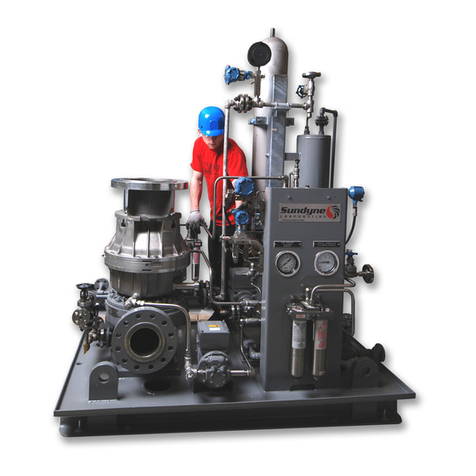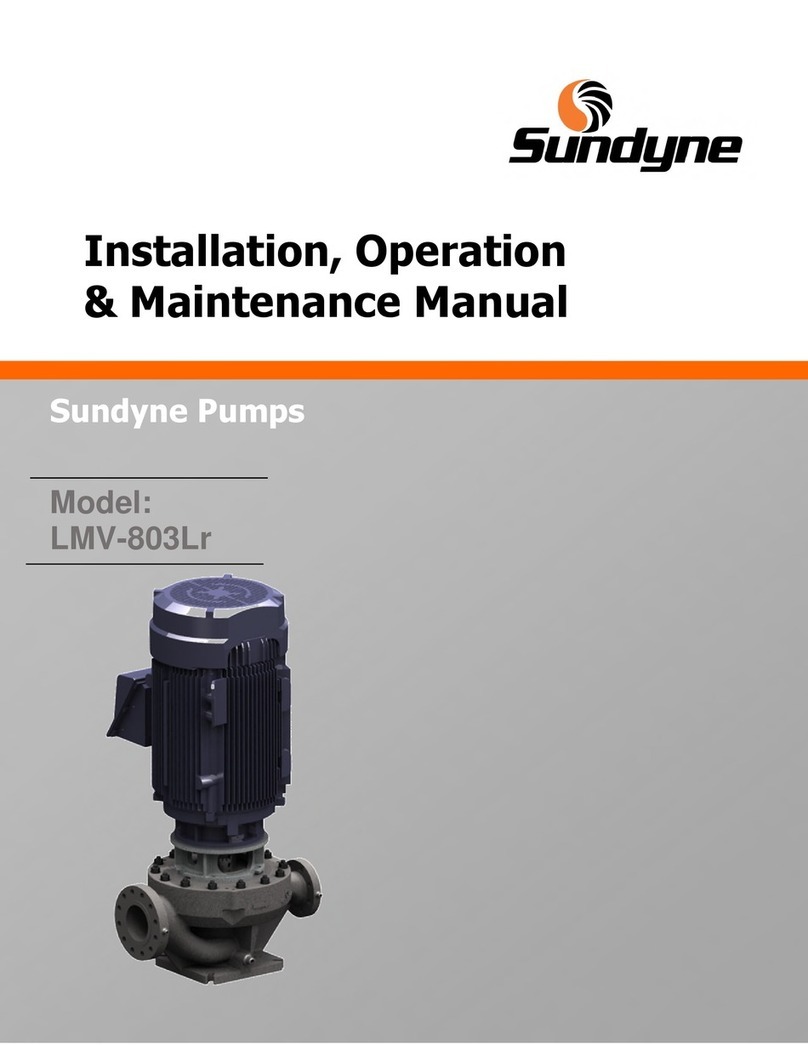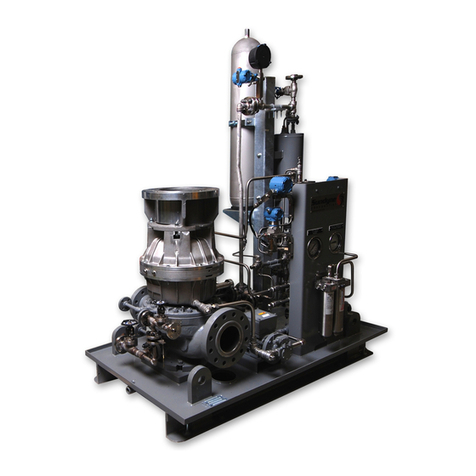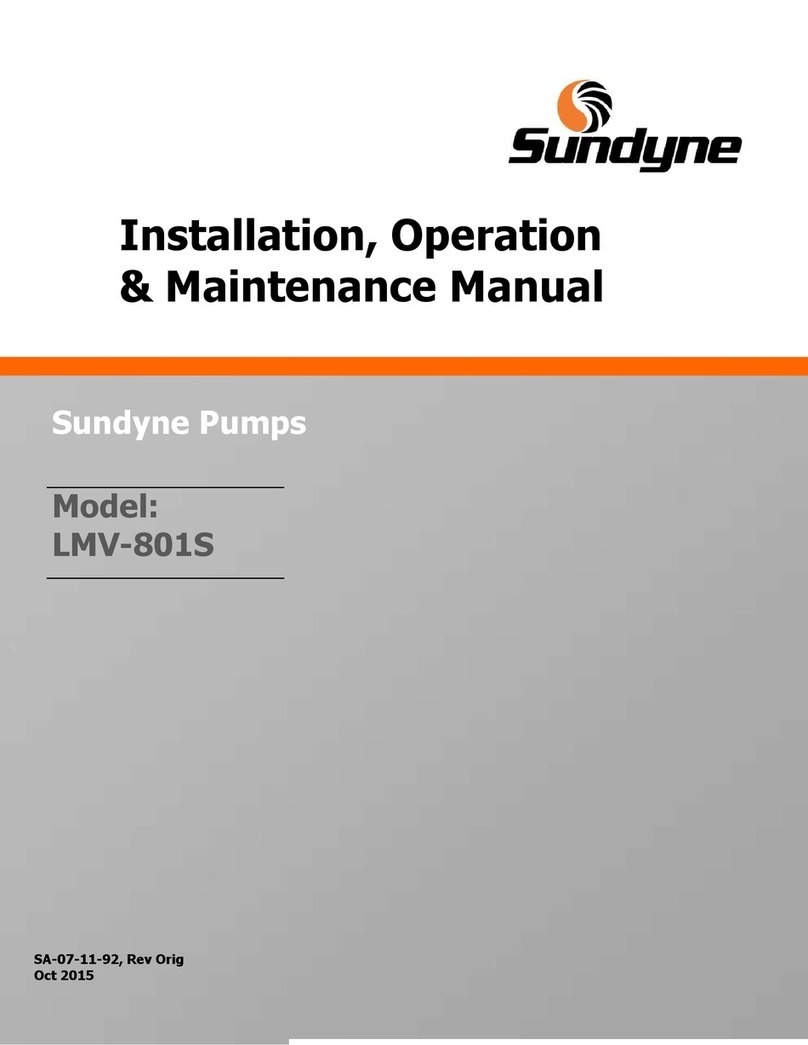INTRODUCTION
This manual presents installation, servicing, troubleshooting, maintenance and spare parts information for the
Sundyne Model LMV-806 centrifugal pump.
If the pump has a bearing box and coupling option, the instructions for these are in a separate manual.
Parenthetical numbers included in the text correspond to item numbers of the illustrated figures. The item number
of a part is based on the part’s function and the correct spare part can be ordered for any generation pump even if
the component parts do not appear the same as presented in this revision of the instruction manual.
Information that may be required regarding performance, alterations, or detailed technical data which is not included
herein may be found in the specification sheet and parts list accompanying the unit, or may be obtained from your
Sundyne representative.
Custom-made auxiliary equipment cannot be shown in this manual. Refer to the outline drawing for specifics.
WARNING
The pump should not be operated, or maintenance performed, without a thorough understanding of the contents of
this manual.
1. INSPECTION
Care should be taken when uncrating the pump. If the
shipment is not delivered in good order and in accor-
dance with the bill of lading, note the damage or short-
age on both the receipt and freight bill. Make
any
claims to the transportation company immediately.
2. STORAGE
If the equipment is not to be installed immediately, it
should be stored in a clean, dry area. Care should be
taken to protect from exposure to moisture and dust.
Shipping covers installed at the factory for casing
flanges and seal ports must be kept securely in place.
Storage instructions provided by the driver (motor or
turbine) manufacturer should be observed.
If provisions for long term storage (periods in excess of
six months) are required and have not been made prior
to shipment of the unit, contact your Sundyne repre-
sentative for recommendations on storage procedures.
3. SUCTION AND DISCHARGE PIPING
A. All piping must be supported independently of the
pump. The piping should always line up with the pump
flanges. Never draw the piping into place by the use of
force at the flanged suction and discharge connections
as this may impose dangerous strains on the unit.
B. The piping, both suction and discharge, should be as
short and direct as possible. Avoid all unnecessary
elbows, bends, and fittings as they increase friction
losses in the piping. The size of the pipe and fittings
should be selected carefully and be of sufficient size to
keep the friction losses as low as practical.
C. If the pump is supported by the base, piping must not
be connected to the pump until after pump hold-down
bolts have been tightened.
D. The use of elbows near the suction flange should be
avoided. When used, elbows should be long radius. A
straight pipe run of at least two times the pipe diamete
r
is desirable between an elbow and the suction flange.
E. Suction pipe should never be of smaller diameter than
the pump suction inlet. Reducers, if used, should be
eccentric and preferably slope up to the pump to avoid
creating air pockets in the piping.
F. If reverse flow during shutdown is likely, it is recom-
mended that a check valve be installed in the discharge
line to protect the pump from possible reverse rotation.
4. SEAL ENVIRONMENTAL CONTROL SYSTEM
Depending upon the pump seal arrangement and
application, a seal environmental control system may
be required. The pump seal environment must always
be maintained as specified on the specification sheet
which accompanies each unit delivery. For many appli-
cations a standard kit can be supplied from the factory.
Insure that the seal environmental control system
specified is properly installed and that ports (refer to
Figure 1) are open or plugged as shown.
WARNING
PORT #1 MUST ALWAYS BE OPEN TO A DRAIN.
INSTALLATION
1



































